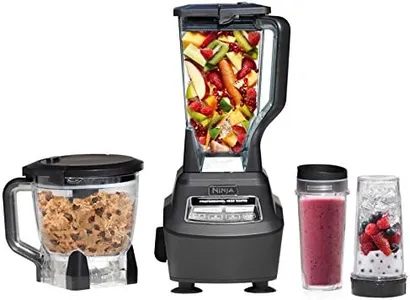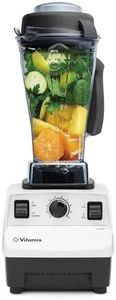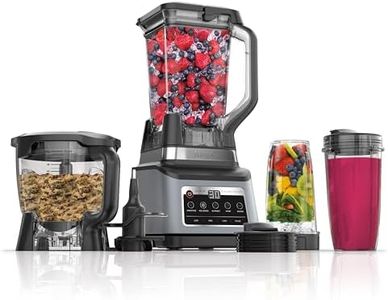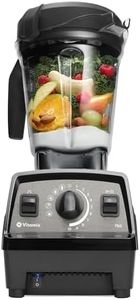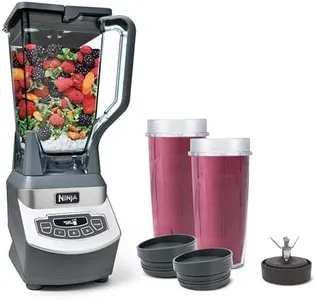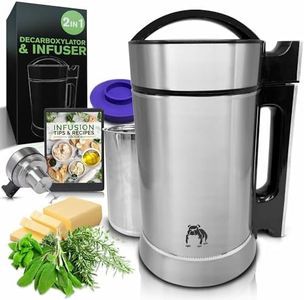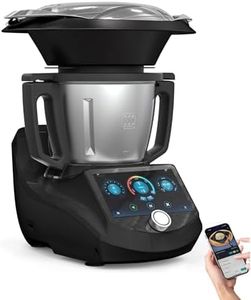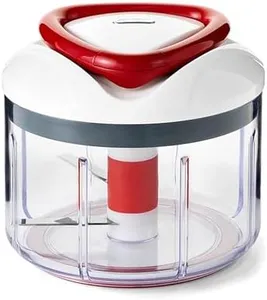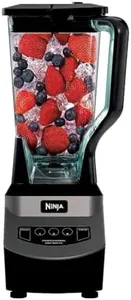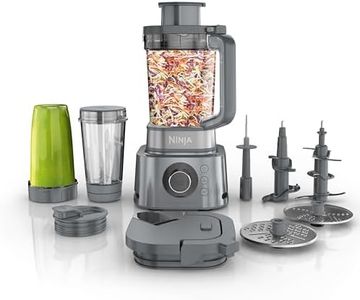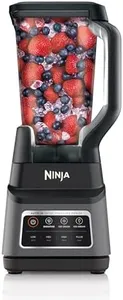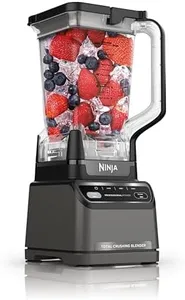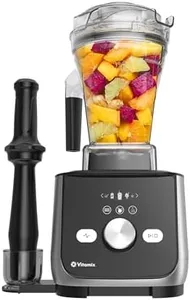10 Best Blenders 2025 in the United States
Our technology thoroughly searches through the online shopping world, reviewing hundreds of sites. We then process and analyze this information, updating in real-time to bring you the latest top-rated products. This way, you always get the best and most current options available.

Our Top Picks
Winner
Ninja Mega Kitchen System, 1500W, 72 oz. Full-Size Blender & 8-Cup Food Processor with (2) 16 oz. To-Go Cups, Total Crushing Technology - Smoothies, Ice Crushing, Purees, Dough & More, Black, BL770
Most important from
92838 reviews
The Ninja BL770 Mega Kitchen System is a versatile blender that stands out for its power and functionality, making it a great choice for anyone who enjoys smoothies, frozen drinks, and food processing. With a robust 1500W motor, it can crush ice quickly and efficiently, producing smooth textures for beverages. The 72-ounce pitcher is ideal for large batches, while the 64-ounce food processor bowl excels at chopping and mixing up to 2 pounds of dough in just 30 seconds, catering well to both drink and food preparation needs.
One of its significant advantages is the inclusion of two 16-ounce Nutri Ninja cups with to-go lids, perfect for on-the-go individuals. The four versatile functions—Blend, Mix, Crush, and Single-Serve—allow users to customize their blending experience, making it user-friendly for various recipes. Cleaning is straightforward since the parts are dishwasher safe, which is a big plus for busy users. However, caution is required when handling the blades, and washing the motor base with a damp cloth can seem inconvenient for some.
There are a few considerations to keep in mind. The noise level may be higher due to the powerful motor, which might not be suitable for those seeking a quieter appliance. Additionally, while it offers a fantastic range of features, its size can be a drawback for those with limited kitchen space, and it may be heavier to lift compared to simpler models.
Most important from
92838 reviews
Vitamix 5200 Blender, Professional-Grade Blender for Smoothies, Soups, Ice Cream and More, Stainless-Steel Blades, Self-Cleaning Kitchen Appliance, 64 Oz Container, White
Most important from
7979 reviews
The Vitamix 5200 Blender is a strong choice if you want a reliable, professional-grade blender that handles large batches with ease. Its powerful motor (using 11.5 amps) and aircraft-grade stainless steel blades can crush tough ingredients smoothly, even heating soups by friction without extra steps. The 64-ounce container is roomy enough for family-sized portions and is BPA-free, ensuring safety and durability.
Speed control is very flexible thanks to a variable dial knob with 10 speed options, letting you fine-tune textures from chunky to silky smooth. Cleaning is simple with the self-cleaning feature—just add soap and water, and it cleans itself in under a minute. The blender is a bit heavy at nearly 11 pounds, which means it’s more suited for a permanent spot on your counter rather than frequent moving. Noise is typical for powerful blenders; it can be loud during use, so consider that if noise is a concern.
The Vitamix 5200 is backed by a generous 7-year warranty that covers parts and service, reflecting its quality and durability. This blender is an excellent option for anyone who values power, versatility, and ease of maintenance, especially for larger blending tasks or hot soups. However, if you want something more compact or quieter, it might not be the perfect fit.
Most important from
7979 reviews
Ninja BN801 Professional Plus Kitchen System, 1400 WP, 5 Functions for Smoothies, Chopping, Dough & More with Auto IQ, 72-oz.* Blender Pitcher, 64-oz. Processor Bowl, (2) 24-oz. To-Go Cups, Grey
Most important from
36469 reviews
The Ninja BN801 Professional Plus Kitchen System is a powerful and versatile countertop blender with a strong 1400-watt motor that easily crushes ice and handles tough ingredients. Its large 72-ounce pitcher (with a 64-ounce liquid capacity) is great for making smoothies and drinks for the whole family, while the included 24-ounce to-go cups add convenience for single servings. The system also includes an 8-cup food processor bowl with specialized blades for chopping and dough mixing, making it more than just a blender—it can take on multiple kitchen tasks.
It offers 5 preset Auto-iQ programs that automate blending, pulsing, and pausing, which helps users get consistent results without guessing about speed or timing. This makes it especially user-friendly for those who want good results quickly. The stainless steel blades are designed for efficient crushing and processing, and the variety of blade attachments means you can handle different recipes, from smoothies to dough. In terms of cleaning, while the detachable parts are dishwasher safe, the multiple components can take some extra effort to clean compared to simpler blenders. The motor base is a bit heavier (about 8.8 pounds), so it’s best suited for a permanent spot on your countertop rather than frequent moving. With three speed settings plus preset functions, it covers most blending needs without overwhelming complexity.
This Ninja system is well suited for users looking for a multifunctional and powerful kitchen tool that combines blending, chopping, and dough mixing. It might be more than needed if you want a simple personal blender, but it’s a solid choice for families or anyone wanting to replace multiple appliances with one efficient system.


